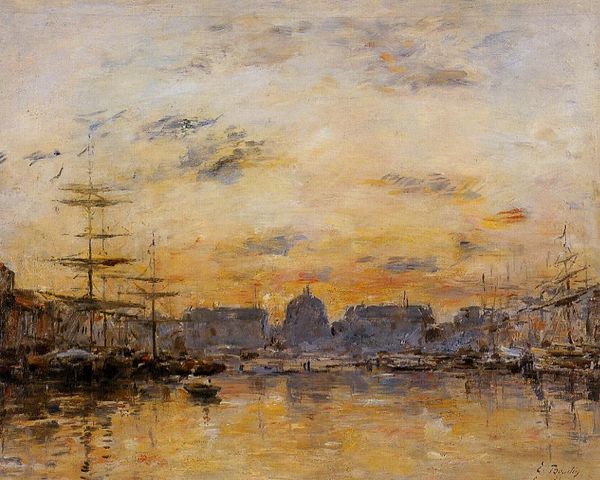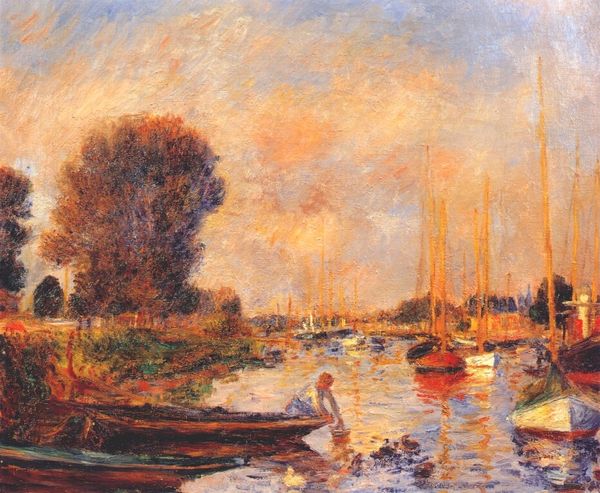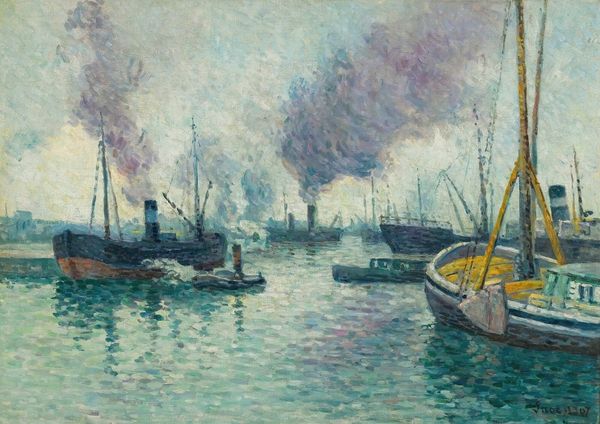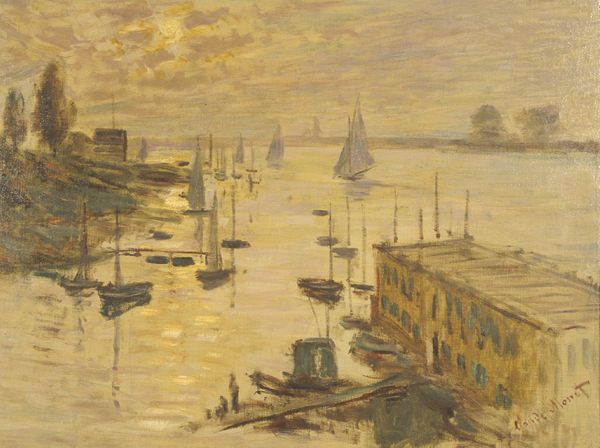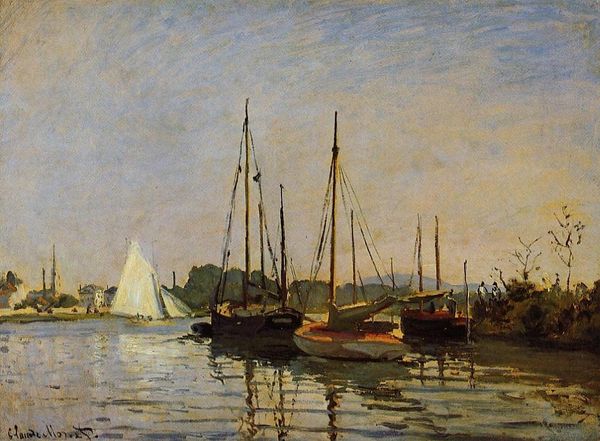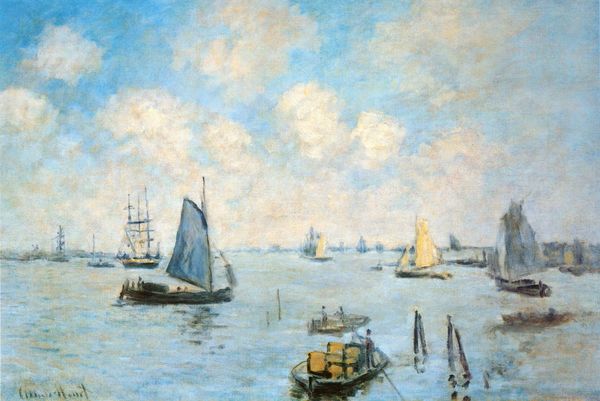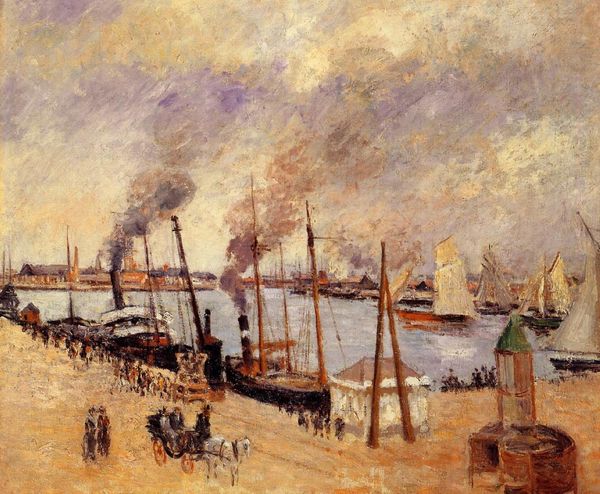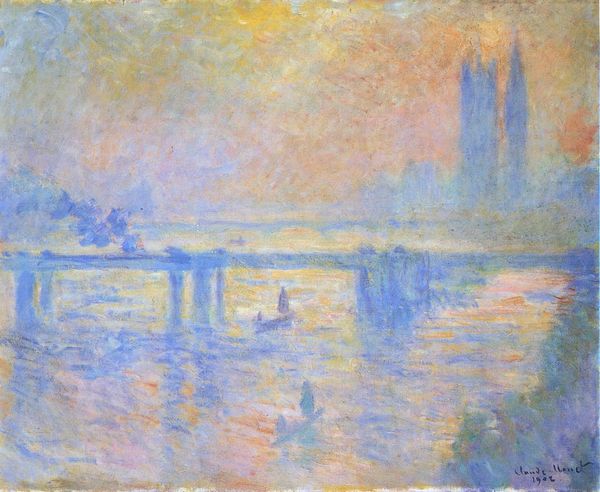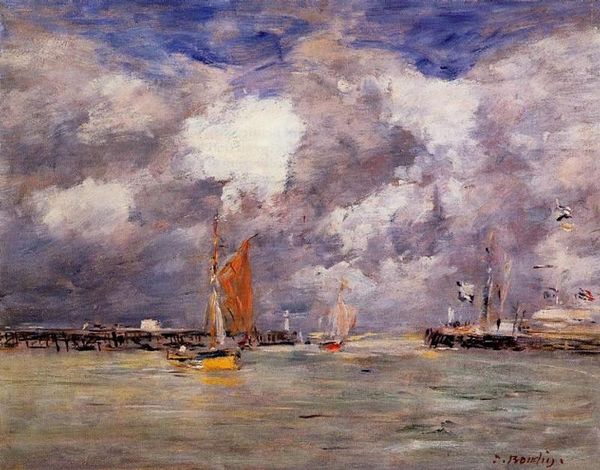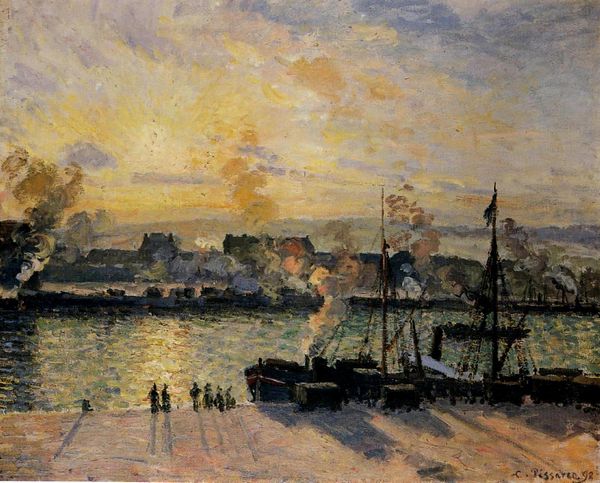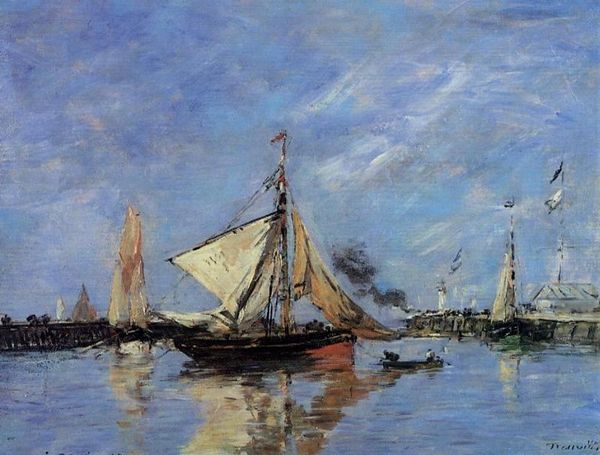
#
abstract expressionism
#
abstract painting
#
impressionist landscape
#
possibly oil pastel
#
fluid art
#
acrylic on canvas
#
seascape
#
paint stroke
#
watercolor
#
expressionist
Copyright: Public domain
Pierre-Auguste Renoir captured Venice in a haze of indistinct shapes and vibrant colors with oil on canvas. The blurred edges of the buildings and the water’s surface, filled with gondolas, create a dreamlike vision, a symbolic gateway to an ethereal world. Consider how the motif of fog has been utilized throughout art history, dating back to antiquity, particularly during the Romanticism movement, in works that explore the sublime. Fog acts as a veil, obscuring the clear boundaries of our world and inviting the viewer to delve into a realm of imagination, much like Caspar David Friedrich's landscapes, where fog often symbolizes introspection and the mysteries of nature. This motif has evolved, often representing obscurity or uncertainty, and can be seen in more modern contexts as a symbol of hidden truths. Here, the emotional impact is potent. The ambiguity of form encourages us to project our fears, desires, and memories onto the canvas, creating a powerful force that resonates on a subconscious level. Renoir’s impressionistic technique captures a fleeting moment, a visual echo that invites contemplation across centuries.
Comments
No comments
Be the first to comment and join the conversation on the ultimate creative platform.

